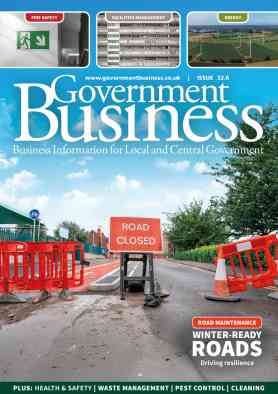
Recruiting in the public sector
Recruiting talent to the public sector is not easy, but Crown Commercial Service’s Executive & Non-Executive Recruitment Services framework helps to ease some of the pressure
Public sector recruitment is hard at the moment, with funding cuts and budget squeezes meaning there are likely fewer positions available and fewer resources available to fill vacant positions. The pandemic has led to people retiring earlier than expected and Brexit has caused a shortage of employees. These problems are universal across the job market so there is also competition for the top talent, with the private sector often able to provide higher salaries and better benefits.
The framework can help you with your recruitment process, from start to finish and offers several suppliers and services.
It allows all public sector organisations to access executive and non-executive recruitment services for permanent, fixed-term and inward secondment roles.
The framework splits the available recruitment services into core or non-core and both are available on a modular basis, so you only buy the services you need when you need them.
The core modular services are identifying and attracting potential applicants to apply for positions, assessment and evaluation and offer and appointment. These all include customer planning. Buyers are able to access all core services from suppliers as part of an end-to-end recruitment service.
Non-core modular services are not included in the end-to-end recruitment service, but can be accessed if needed. The non-core modular services include strategy and planning, talent development services, talent mapping, reserve lists and talent pools, executive development and coaching, technology services such as applicant tracking systems (ATS) and video interview and international recruitment.
First steps
Before you start your candidate search, think about what you want to achieve. Do you want to hire someone for a vacant position on the same job description as the person who left or could you shuffle some responsibilities? Would it be better to hire two people to share a role or to fill a vacant position internally? Look at how your organisation works and see if you could benefit from redefining some job descriptions or reallocating some roles or responsibilities to make your organisation run more smoothly.
Identifying and attracting potential applicants
The framework can connect you with agencies that will be able to help you from the beginning of your candidate search. Firstly, write attractive adverts and job descriptions. Public sector positions can sometimes be uninviting for those looking for a new job or a career move. Make sure your job ads are personable and enthusiastic and make the job look enjoyable. Try not to use overly formal language that could put people off.
Highlight what is good about working in the public sector, that may be different from the private sector, for example job security and having a positive impact on society. Emphasise the importance of the public sector and the essential services you provide. Think about the benefits you can offer that won’t cost any money, such as working from home and flexible hours. Despite the pandemic, a lot of private sector organisations still don’t offer these benefits, even though a lot of workers want them, it doesn’t cost a penny and can in fact improve employee satisfaction and therefore productivity as well. It can also widen your candidate pool, for example to parents with school-age or younger children, who may not have been able to take a full-time office job before.
You can also provide benefits such as training and mentorship which are little-to-no cost and will actually benefit your organisation in the long run, by improving the skills and confidence of your new hire.
Young hires can also reverse mentor their senior colleagues by providing guidance on things like social media, cybersecurity and software implementation.
Don’t be afraid to advertise your open positions outside of government job boards, for example if you are hiring for an admin role, post your job ad on an admin job website.
It does not hurt to invest in technology – an efficient, easy-to-use and well-run application platform can make you more inviting to potential applicants and increase the number of applications. Good technology can reduce your costs elsewhere in the long run. Also updating the technology you use for day-to-day operations can make you more attractive to applicants. Social media is a great place to advertise for local positions and can help you attract young people who may not have considered a career in the public sector or others who are looking for a career change.
Think about your brand. If you are a local council for example, make sure the local residents know what you do, have a local newsletter, send councillors to local events, respond to queries promptly etc. If local residents have a good perception and awareness of what the council does and a positive attitude towards them, then they are more likely to want to work there.
Assessment and evaluation
The framework also offers assessment and evaluation as a core module, meaning there are suppliers to help you find the best candidates once you have put your job ad out there.
Make sure you have policies and strategies in place to help you evaluate the best candidates – a supplier will be able to help you with this. Consider assessment tools such as AI, which can save the hiring team money as well as help you find the most qualified candidate.
Work with your supplier to come up with appropriate and informative interview questions and avoid the old classics like “Where do you see yourself in five years’ time?” and “What is your biggest weakness?” Assess the interest of the applicant in the vacant position, those who are genuinely interested in the role are more likely to be successful and stick around for longer.
When interviewing a candidate, create a positive and welcoming environment. Be friendly and approachable and start with some small talk and general chit-chat before launching into the interview. Acknowledge and respond to their answers and don’t just move from one question to another. If someone is coming into the office for an interview, make sure you are prepared, you have a room set up and the place looks friendly and welcoming, as well as clean and in good repair. This can be the difference between a candidate accepting a position or deciding to go somewhere else.
Be prepared for the questions a candidate might ask, and have an answer ready. You can also use this opportunity to share the pros of working for your organisation. For example, they may ask about benefits or career advancement. Public sector organisation tend to have well-defined and clear career progression opportunities that may not be available in the private sector.
You should always keep an open mind, if your admin assistant has retired after 30 years in the same role, don’t assume that the perfect candidate is a similar person. It might be the perfect position for a recent school-leaver rather than someone with years of experience.
Make sure you follow all guidelines and regulations, whether these be legally enforceable or at your organisation level. Note that some government agencies have very strict regulations and you need to make sure you follow these.
Think about the criteria that are necessary for the role. Does someone need experience or could you hire someone inexperienced and train them up? Is a degree really necessary? This can be a barrier for applicants from lower-socioeconomic backgrounds, who could do the job just as well as someone with a degree.
Offer and appointment
The final core module of the framework is offer and appointment. Make sure you have a flexible recruitment process and get back to candidates quickly, acknowledge receipt of their application, thank them for coming in for an interview etc. If a candidate doesn’t make the shortlist, or doesn’t make it past the interview, let them know. This creates a good impression in their mind and they are more likely to remember you as an employer. If they have to wait a long time to hear back from an interview, they may already have taken another job. If they never hear back from you, they are unlikely to want to apply for another job in your organisation, even if they may be a good candidate. Remember word-of-mouth is important, particularly if you are a large local employer such as a council or a hospital.
Make sure to check references before offering your candidate the job.
Your appointed supplier will be able to help you with the job offer. Remember, there is no guarantee your chosen candidate will say yes.
When making a job offer, your chosen candidate should receive all the information they need to make an informed decision. If there is information missing, this may lead to them leaving the role prematurely if something unexpected happens once they start the job. A job offer should include the candidate’s name, the job title, the salary and start date. It should also include terms and conditions, benefits and requests for any required legal documents, such as proof of right to work in the UK.
Once a candidate has accepted a job offer, make sure a contract is sent promptly. This should already be prepared.
Your organisation should already have templated offer letters and contracts, but make sure everything is approved by the relevant team or manager and the legal department or representative.
The chosen candidate may have questions, make sure these are answered promptly.
The framework
Crown Commercial Service’s Executive & Non-Executive Recruitment Services framework lists suppliers that are able to help in every category listed above. It also provides several other benefits. Hiring managers are able to choose which suppliers they engage with and how.
The framework offers the ability to direct award, which can save time and money, especially if you are looking to fill a vacant role quickly.
The framework includes capped maximum costs, to protect buyers from market price increases. This is incredibly important at the moment. There are also no hidden costs, as everything is included in the cost of the service. There are discounts available for hiring more than one candidate.
Suppliers will do a lot of the work for you, for example, it is a requirement that they develop employer value proposition, which ensures that candidates want to work for your organisation. The EVP also includes any benefits that the employee will receive including pay and learning and development opportunities.
Suppliers must also work towards civil service diversity and inclusion requirements, that are also likely in place in your organisation and can help you achieve your own D&I aims.
Finally, framework support is available from CCS’s customer and agreement management teams.
More information is available on CCS’s website, including details on how to buy and all the framework documents.
If you have vacant roles to fill, or are looking for a new recruitment services provider, CCS’s Executive & Non-Executive Recruitment Services framework provides all the information and suppliers you need to be able to do this, as well as customer service teams to help you along the way.


